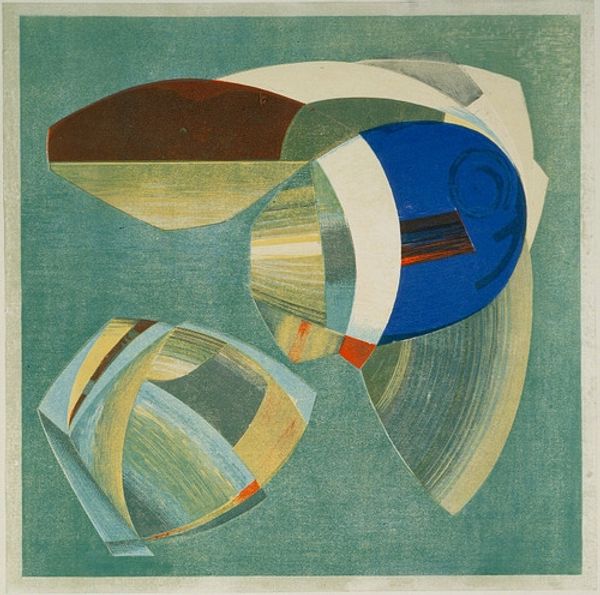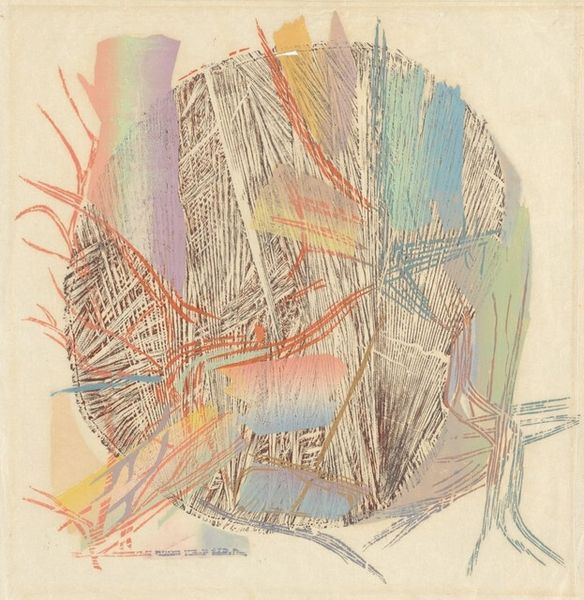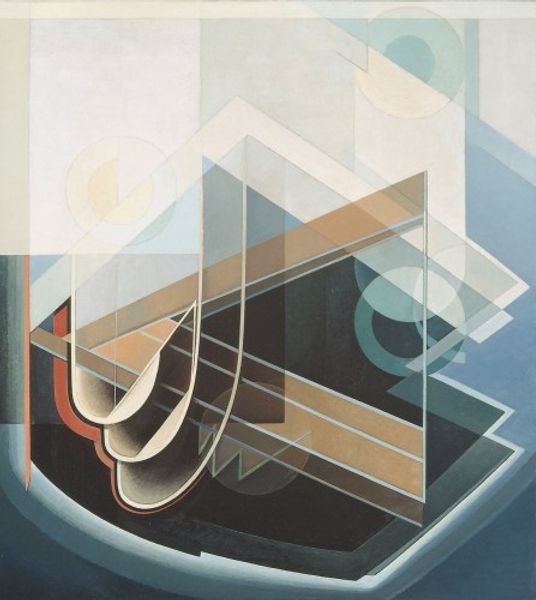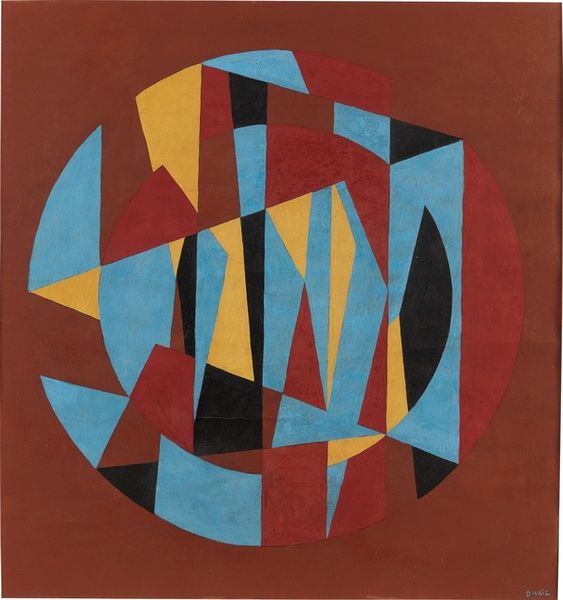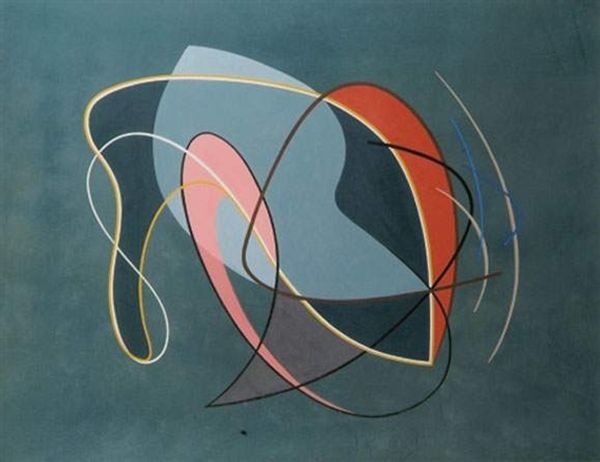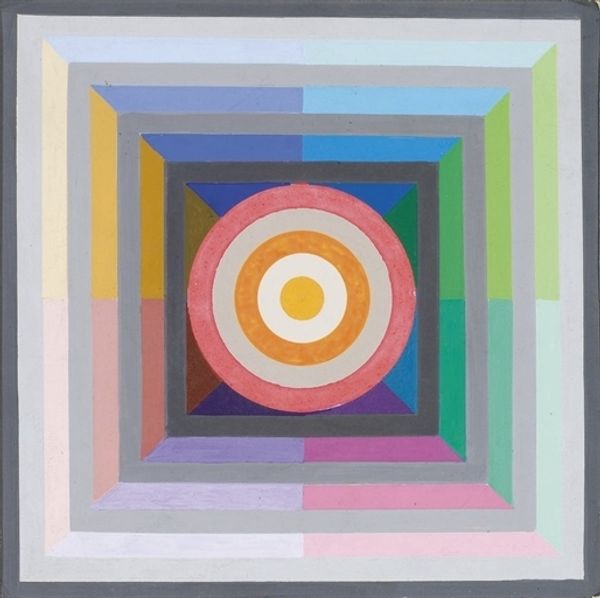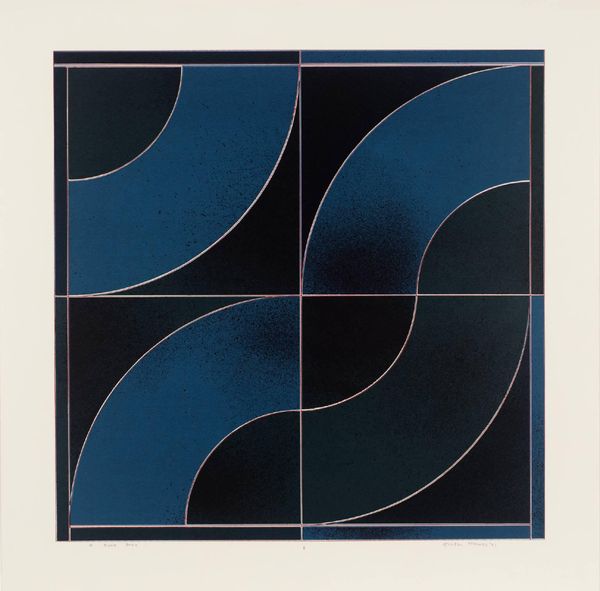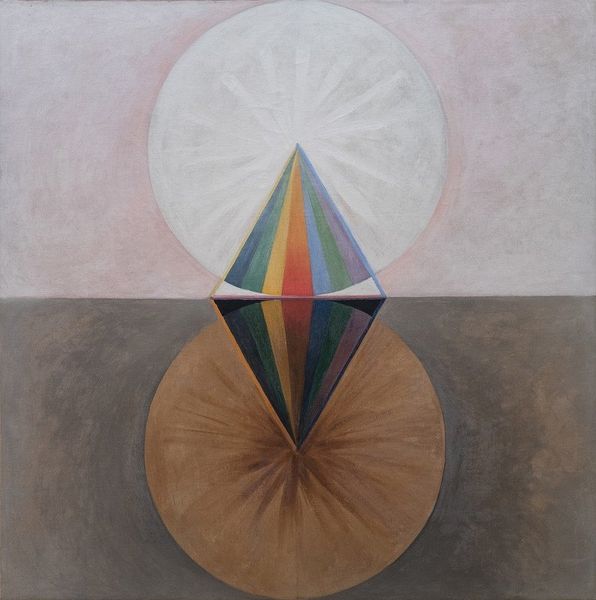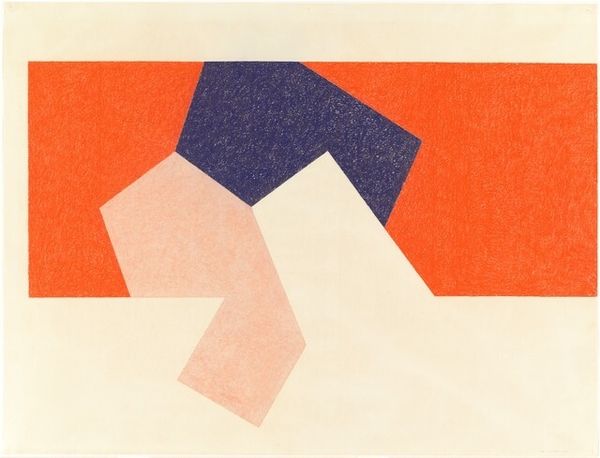
#
cubism
# print
#
geometric
#
abstraction
#
modernism
Dimensions: image: 36.8 x 36.9 cm (14 1/2 x 14 1/2 in.) sheet: 49.1 x 47.3 cm (19 5/16 x 18 5/8 in.)
Copyright: National Gallery of Art: CC0 1.0
Curator: Here we have "Sea Forms," a 1937 print by John Ferren. Notice the strong geometric shapes. What are your initial thoughts? Editor: It feels like an exploration of natural forms translated into a modernist language. The colour palette and shapes give a slightly nautical feeling, despite its abstraction. Curator: It's interesting that you pick up on the nautical feeling, despite it not being immediately obvious. Ferren's work often reflected the artistic trends of his time, and in the 1930s, geometric abstraction was prevalent. Considering that context, does it alter your perspective at all? Editor: Absolutely. Knowing that he was part of that larger modernist movement gives context to his process of using geometric forms, helping one consider how his experimentation intersects with the cultural and intellectual climate of his period. Also, I find the intersection of abstraction and natural reference compelling; it questions what the ocean means symbolically as this point. Curator: Ferren was part of a generation that was thinking critically about form and representation in art. He was particularly involved with pushing what materials and abstraction could do, which ultimately led him to New York City and the center of the avant-garde. Editor: Thinking about how Ferren fits into the avant-garde movement of the era highlights that the political, gender, and race issues of the time, likely affected his thinking. What social influences or schools of thought can be read into “Sea Forms”? Curator: Well, the lack of figuration can be read as a move away from traditional representation, a rejection of old structures, in favour of new modes of seeing. His practice encouraged people to reconsider what art was for, and whom it served. Editor: Right. To be avant-garde, it needs to critique conventional tastes. I suppose that’s why abstraction, even something as lovely as "Sea Forms," was so radical in its day. Curator: Indeed. Thinking about the socio-political implications helps us interpret not only Ferren's intentions, but also the wider reception to modernism. Thank you for unpacking the complexities here. Editor: My pleasure. Reflecting on these dynamics reminds us of art's important position within cultural shifts.
Comments
No comments
Be the first to comment and join the conversation on the ultimate creative platform.
